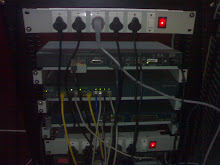Embedded system
Embedded system is a system in which computer is completely encapsulated by the device it controls. As we cannot take the computer everywhere and for every device. It performs the pre-defined tasks and without many peripherals like keyboard, mouse, monitor etc. It has done miracles in technology.
Embedded system is the combination of software and hardware. Software is written and stored in the ROM or Flash memory of the microcontroller. Then this programmed microcontroller works according to that software with limited hardware. It has reduced the cost of devices due to decreasing the number of electronic components. Day by day the microcontroller is being encapsulating for more and more data storage and gaining high speed.
An embedded system is a special-purpose computer system designed to perform one or a few dedicated functions, often with real-time computing constraints. It is usually embedded as part of a complete device including hardware and mechanical parts. In contrast, a general-purpose computer, such as a personal computer, can do many different tasks depending on programming. Embedded systems control many of the common devices in use today.
Since the embedded system is dedicated to specific tasks, design engineers can optimize it, reducing the size and cost of the product, or increasing the reliability and performance. Some embedded systems are mass-produced, benefiting from economies of scale.
Physically, embedded systems range from portable devices such as digital watches and MP4 players, to large stationary installations like traffic lights, factory controllers, or the systems controlling nuclear power plants. Complexity varies from low, with a single microcontroller chip, to very high with multiple units, peripherals and networks mounted inside a large chassis or enclosure.
